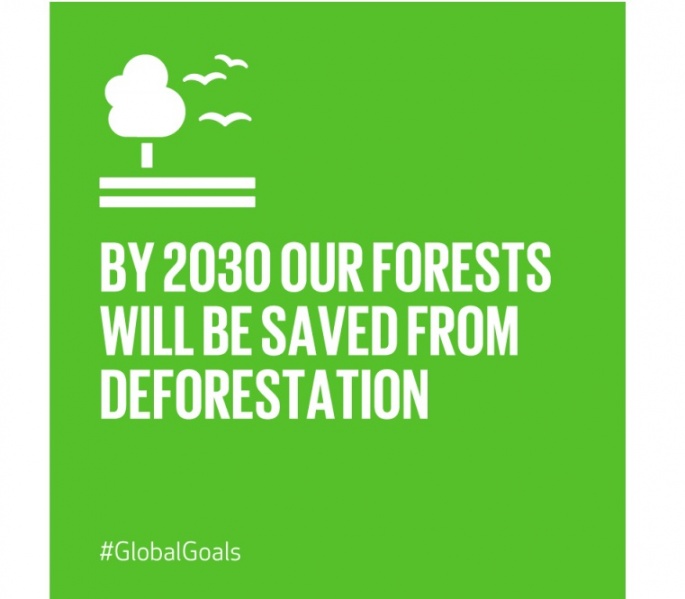The first UN Strategic Plan (2017-2030) for Forests
02/02/2017


On 20 January, 2017, during the UN Forum on Forests, 197 Member States reached agreement on the first UN Strategic Plan for Forests that provides an ambitious vision for global forests in 2030. This plan will significantly improve the outlook for the world’s forests, including a target that would expand the world’s forests by 120 million hectares - an area about the size of South Africa - by 2030.
___________________________________________________________________________________________________
|
“Agriculture, forestry and fisheries contribute massively to achieving the Sustainable Development Goals… Forests and sustainable management of forests are core aspects of SDG15 and its targets. Forests are also explicitly addressed in the SDG6 target 6.6 on water and are crucial to achieving many of the other SDGs and associated targets. This includes poverty eradication (SDG1), food security and nutrition (SDG2), health (SDG3), gender equality (SDG5), sustainable energy (SDG7), sustainable economic growth (SDG8), infrastructure and innovation (SDG9), sustainable consumption and production (SDG12), climate change (SDG13), peaceful and inclusive societies, justice, accountable institutions (SDG16), and means of implementation (SDG17)” (FAO - COMMITTEE ON FORESTRY, 2016). |
# FAO Report: State of the World’s Forests 2016
# FAO Video: State of the World’s Forests 2016
Forests presently cover nearly 4 billion hectares of the Earth’s land area. An estimated 1.6 billion people – 25 per cent of the global population – depend on forests for subsistence, livelihood, employment and income generation.
The launch of the UN Strategic Plan for Forests (UNSPF) comes at a time of unprecedented opportunity for strengthened action by all actors at all levels around the world, to safeguard the world’s forests and their multiple values, functions and benefits, now and in the future.
In particular, the Plan sets out a framework for action to safeguard the world’s most productive land-based ecosystems and tackle key threats and challenges. In this frame, the Plan features a set of six Global Forest Goals and associated targets:
|
Global Forest Goal 1
|
Reverse the loss of forest cover worldwide through sustainable forest management, including protection, restoration, afforestation and reforestation, and increase efforts to prevent forest degradation and contribute to the global effort of addressing climate change. |
|
Global Forest Goal 2
|
Enhance forest-based economic, social and environmental benefits, including by improving the livelihoods of forest dependent people. |
|
Global Forest Goal 3
|
Increase significantly the area of protected forests worldwide and other areas of sustainably managed forests, as well as the proportion of forest products from sustainably managed forests. |
|
Global Forest Goal 4
|
Mobilize significantly increased, new and additional financial resources from all sources for the implementation of sustainable forest management and strengthen scientific and technical cooperation and partnerships. |
|
Global Forest Goal 5
|
Promote governance frameworks to implement sustainable forest management, including through the UN Forest Instrument, and enhance the contribution of forests to the 2030 Agenda. |
|
Global Forest Goal 6
|
Enhance cooperation, coordination, coherence and synergies on forest-related issues at all levels, including within the UN System and across Collaborative Partnership on Forests member organizations, as well as across sectors and relevant stakeholders. |
to be reached by 2030, which are voluntary and universal.
Thus the UNSPF aims to guide decision making on how to increase forest area by three per cent worldwide by 2030, or rather by 120 million hectares, an area over twice the size of France.
Among a number of Indicative thematic areas for action, the Plan makes clear that it should relate to reliable, strengthened and harmonized forest data and statistics reporting cycles and formats.
# FAO Forest products statistics
The key mission of the Plan is to highlight the contribution of sustainably managed forests to the 2030 Agenda for Sustainable Development, by strengthening cooperation at all levels. Indeed, the Plan recognizes that real change requires decisive, collective action, within and beyond the UN System.
_____________________________________________________________________________________________________
Sources:
